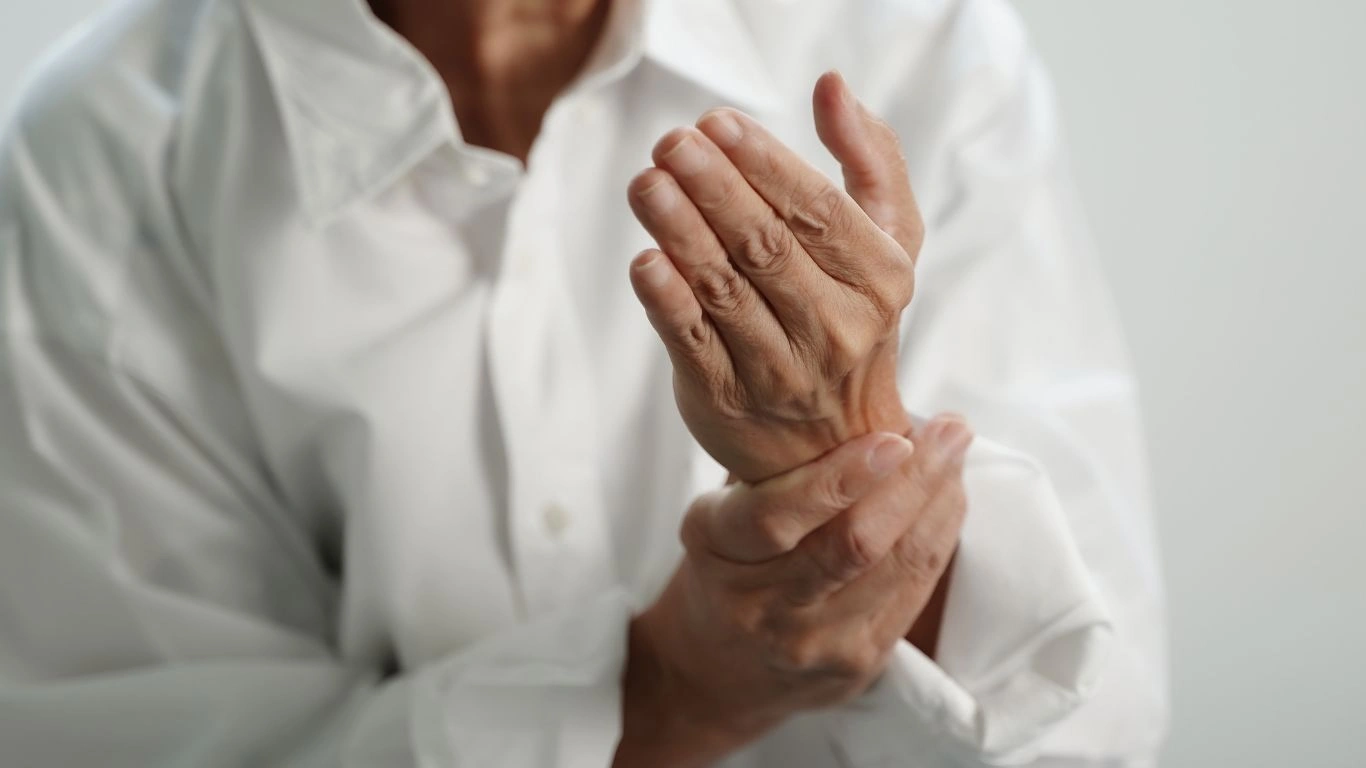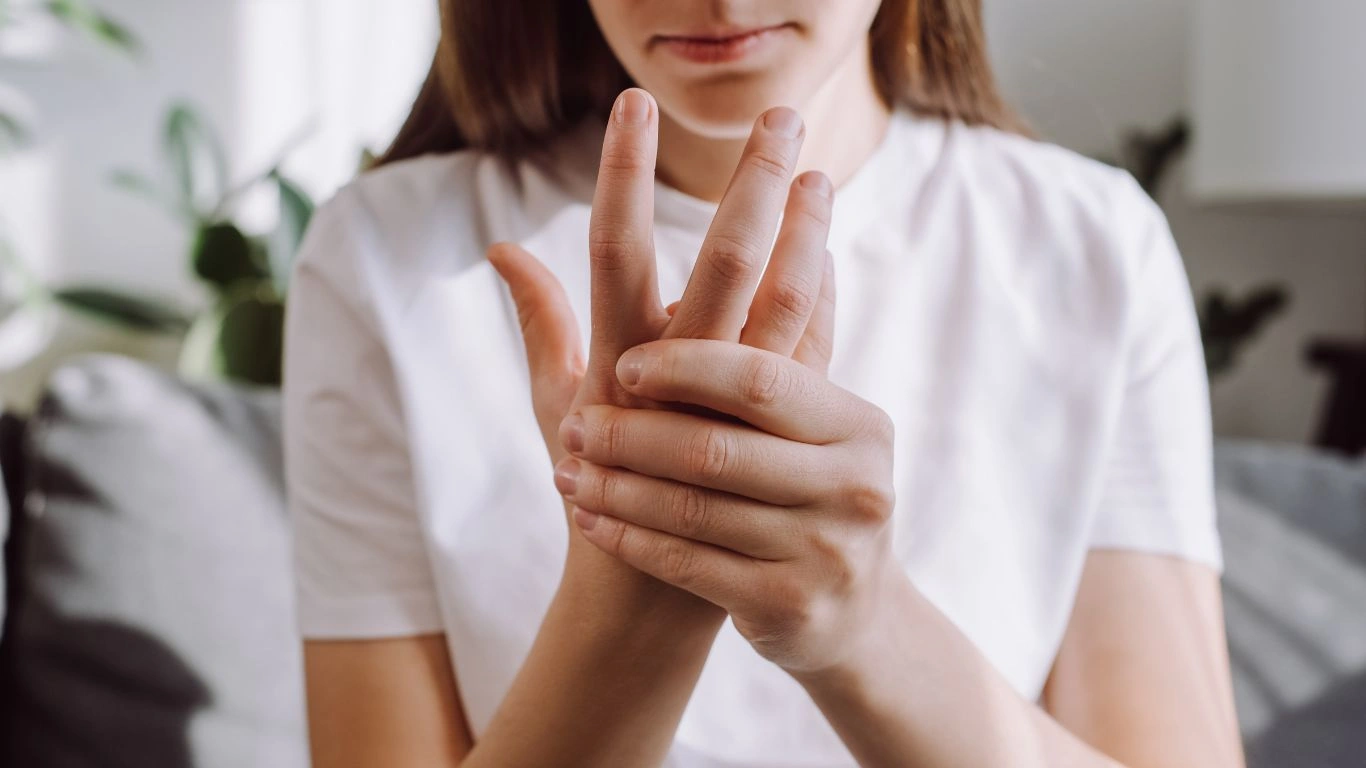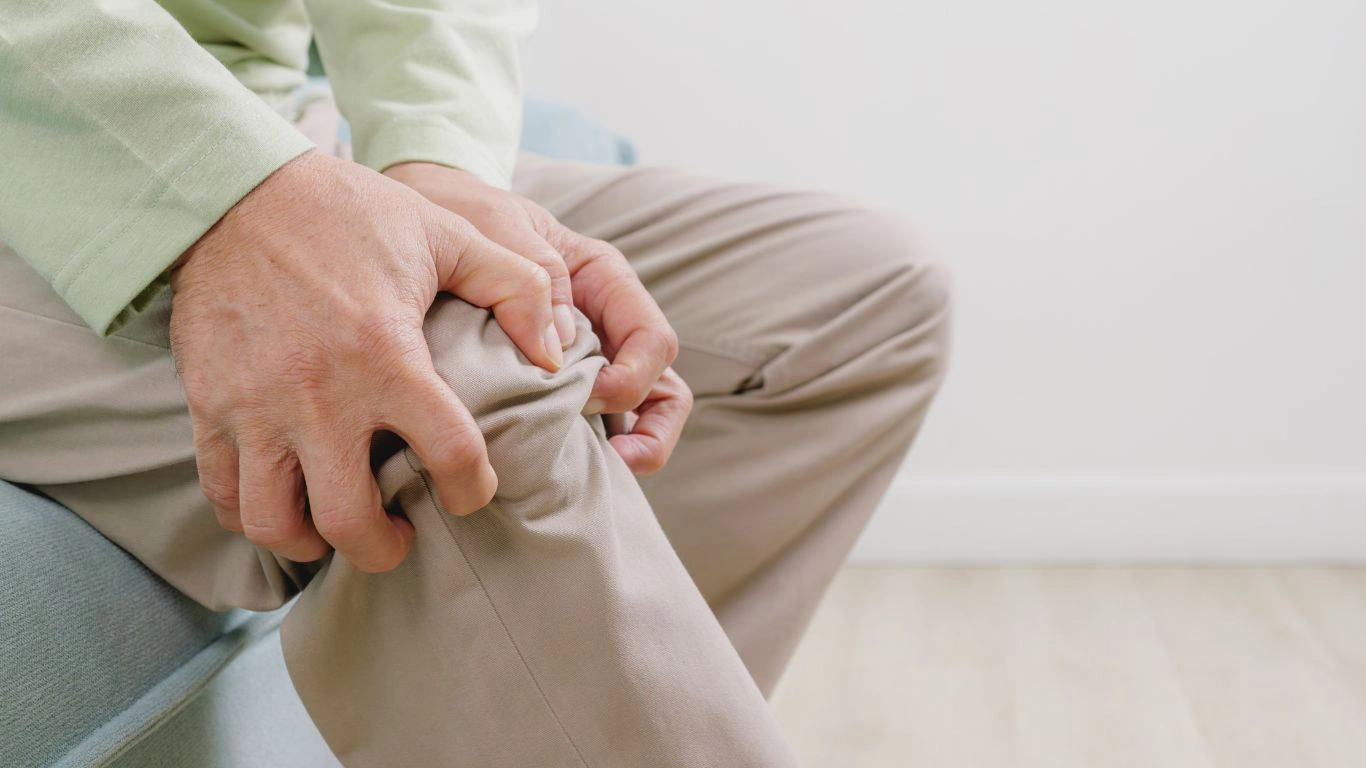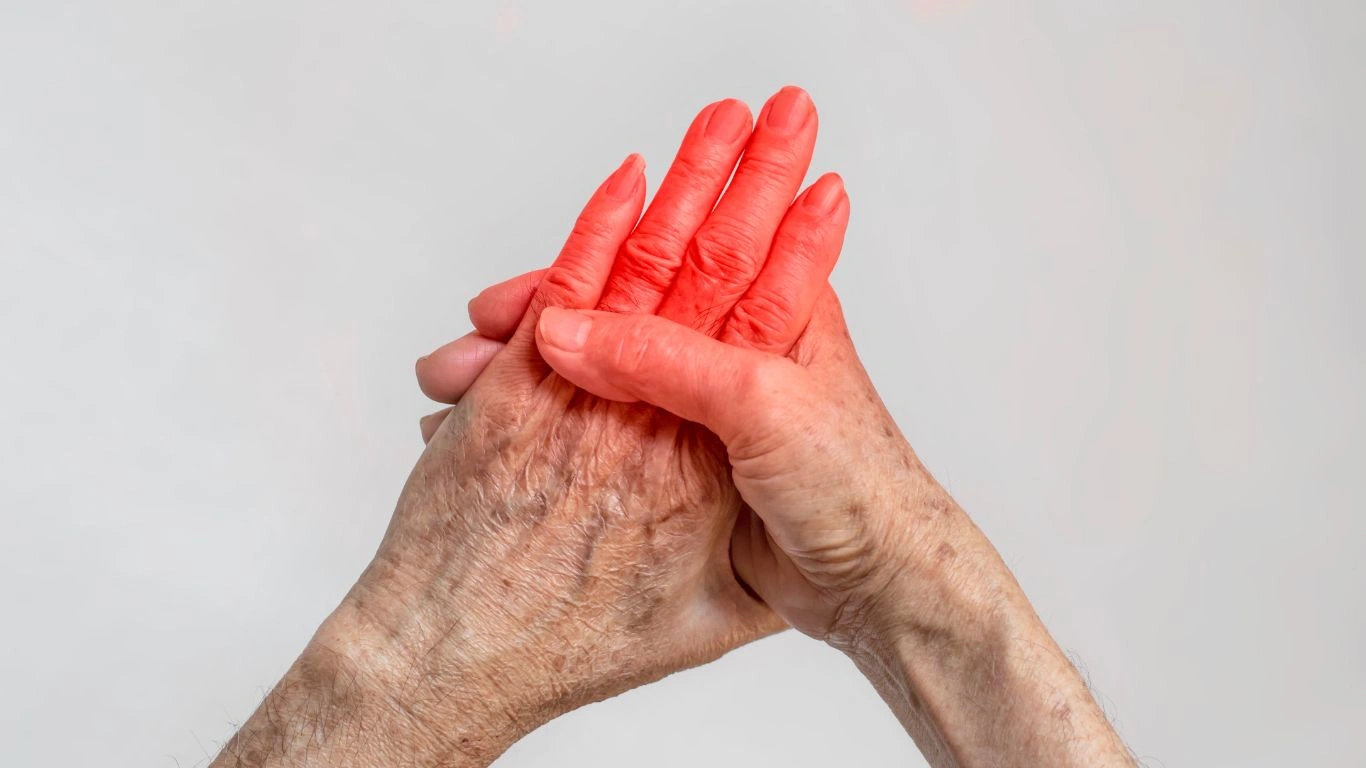Powerful Ways to Prevent Joint Deformities in Rheumatoid Arthritis
If you’ve ever sat across from a patient battling rheumatoid arthritis and joint deformities prevention, then you know—this isn’t just about managing pain or inflammation. It’s about preserving independence, dignity, and the ability to do everyday things like tying shoes or holding a coffee mug. As a Rheumatology Nurse Practitioner, I’ve had countless conversations that start with “I thought this was just arthritis” and end with tears, frustration, or sometimes—relief. Why? Because prevention is possible. Not a magic cure, but real, tangible prevention. And that’s what we’re diving into today.
Understanding the Roots of Rheumatoid Arthritis

Let’s get one thing straight—rheumatoid arthritis (RA) is not your grandma’s wear-and-tear arthritis. It’s an autoimmune disease. Your immune system, which is supposed to protect you, turns around and attacks your joints like a rebellious teenager with no boundaries. Over time, this constant assault causes swelling, pain, stiffness, and ultimately joint deformities. And once the damage is done? It’s done. That’s why we emphasize joint deformities prevention early on in the diagnosis—or even before a diagnosis, if you know the risk factors.
RA Doesn’t Just Affect the Joints
I always remind my patients: rheumatoid arthritis is systemic. That means it’s not just your knuckles and knees—it’s your eyes, lungs, heart, and even mental health. That brain fog you can’t shake off? That morning stiffness that makes you late to everything? That’s RA too. That’s why a holistic approach isn’t optional—it’s necessary.
Early Clues You Shouldn’t Ignore
Here’s the thing—RA doesn’t exactly burst in through the front door. It sneaks in. It whispers. Symptoms like:
- Mild joint stiffness that lasts more than 30 minutes in the morning
- Subtle swelling in hands and feet
- Fatigue that hits like a truck out of nowhere
- Low-grade fevers without any clear cause
If you—or someone you care about—is experiencing these, don’t wait. I’ve seen patients delay care because “it wasn’t that bad yet.” Early diagnosis is key to preventing long-term joint damage.
What Causes Joint Deformities in RA?

Joint deformities in RA happen when chronic inflammation eats away at cartilage, bone, and tendons. Over time, joints lose their alignment and integrity. You’ll see hands drift outward, fingers curling into unnatural positions—what we call “ulnar deviation” and “swan-neck deformities.”
My Clinical Take
I’ve had patients who were marathon runners reduced to struggling with buttons on a shirt. And you know what’s heartbreaking? Some of those deformities were preventable—if we’d caught the inflammation earlier or if treatment had started sooner.
Factors That Speed Up Joint Damage
RA progression isn’t always predictable, but there are red flags that tell me someone’s at high risk for deformities:
- High levels of rheumatoid factor or anti-CCP antibodies
- Multiple swollen joints, especially small joints in the hands and feet
- Delayed or inadequate treatment initiation
- Smoking—yep, still one of the worst offenders
We can’t change genetics, but we sure can tackle the modifiable stuff. Which brings us to the good stuff—prevention.
Real-World Strategies for Joint Deformities Prevention

This is where I love to focus as a nurse practitioner—on the practical, the doable, the real. Because prevention isn’t about locking yourself in a bubble. It’s about smart, consistent actions that stack up over time.
1. Start DMARDs Early
DMARDs (disease-modifying antirheumatic drugs) aren’t a luxury—they’re the foundation. And starting them early can literally prevent erosion. Methotrexate is usually the first one we go for, but biologics and JAK inhibitors are changing the game for more aggressive cases. I’ve seen joints saved, function preserved, lives changed—just because we didn’t wait.
2. Don’t Underestimate Physical Therapy
A good PT isn’t just about exercises—they’re joint protectors, posture gurus, and movement mentors. Gentle strengthening, joint alignment techniques, and splints where needed? That stuff works. I always tell my patients: “Use it or lose it—but use it wisely.”
3. Anti-Inflammatory Diet (That You’ll Actually Stick To)
I’m not here to preach celery juice miracles—but inflammation has a diet connection. Encourage foods that fight inflammation:
- Omega-3 rich fish like salmon or sardines
- Leafy greens and colorful veggies
- Turmeric (yes, really)
- Olive oil, nuts, seeds
Skip the sugar, processed stuff, and trans fats when you can. Think Mediterranean-style eating, not restrictive punishment.
4. Quit Smoking (Like, Now)
RA and cigarettes are a toxic love story that needs to end. Smoking not only increases the risk of RA, but it also makes meds less effective. I’ve seen patients go into remission after quitting. That’s how real the impact is.
5. Prioritize Mental Health
We don’t talk about this enough. Living with chronic illness is a mental marathon. Anxiety, depression, burnout—they mess with your sleep, your energy, your motivation to stick to treatment. I always bring up therapy, mindfulness, or even medication when needed. You’re not weak for needing help—you’re smart for getting it.
Daily Habits That Help Preserve Joint Health

Okay, so we’ve tackled meds, therapy, and diet—but what about the everyday stuff? Because honestly, the little habits my patients stick to daily often make the biggest difference long-term. Think of it like brushing your teeth—small things done consistently can prevent big issues later on. And yes, I do actually compare joint care to brushing teeth sometimes in clinic. It gets a few laughs, but the message sticks.
Protect Your Joints With Smart Movements
This is a big one I teach during patient education visits. Don’t put unnecessary strain on already sensitive joints. Here’s what I mean:
- Use your whole hand to lift objects—not just your fingers
- Slide things across the counter instead of lifting them
- Use assistive tools like jar openers, key turners, or adaptive utensils
- Wear wrist splints during high-activity periods if needed
And I’m not above recommending a stylish compression glove or wrist brace—function first, always, but there are some pretty sleek designs out there now that don’t scream “medical device.”
Low-Impact Exercise Isn’t Optional—It’s Essential
I can’t count how many times I’ve heard, “But movement hurts, so I stopped exercising.” I get it. I do. But motion is lotion. The less you move, the stiffer and weaker things get. We’re not talking CrossFit here—we’re talking gentle, joint-friendly activities like:
- Water aerobics (zero gravity = zero joint strain!)
- Yoga or tai chi with a knowledgeable instructor
- Short daily walks—even if it’s just around the living room some days
Sometimes I even give patients specific YouTube videos to follow. Personalized care means meeting people where they’re at, not giving them a prescription for something they’ll never actually do.
Early Intervention = Long-Term Prevention

I can’t stress this enough: early, aggressive treatment is our best defense against joint deformities in rheumatoid arthritis. I’ve seen patients who started biologics within months of diagnosis maintain near-normal joint structure even 10 years later. On the flip side? I’ve also met patients who waited it out too long and now live with permanent limitations.
Know Your Labs and Imaging
Knowledge is power—especially when it comes to tracking inflammation. These are the ones I walk through with every new RA patient:
- Rheumatoid Factor (RF) and Anti-CCP: These autoantibodies are linked to more severe disease and joint damage risk.
- CRP and ESR: Inflammation markers that help us see what’s going on under the hood.
- X-rays, ultrasound, or even MRIs: Imaging helps catch joint damage early—even before it’s obvious on the outside.
I always encourage patients to ask questions about their lab results. You deserve to understand what’s happening in your body and how we’re working to prevent progression.
Partner With Your Rheumatology Team
This might sound obvious, but hear me out: communication is everything. I’ve had patients stop their meds without telling me because they didn’t like the side effects. Others suffered in silence through flares. And some just… disappeared from care.
We’re not here to judge—we’re here to help. If your meds aren’t working for you, let’s switch it up. If you’re struggling with depression or anxiety, let’s talk. Prevention is a team sport, and we can’t play it without honest, open conversations.
Complementary Therapies That Actually Work

I’ll be honest—I used to be pretty skeptical about “natural” remedies. But over the years, I’ve seen some real benefits when patients incorporate certain complementary therapies alongside standard care. Keyword: alongside. Not instead of.
Acupuncture and Massage
Both can help with pain and stiffness, especially during flare-ups. One of my long-time patients swears by her monthly acupuncture sessions—not as a cure, but as part of her self-care routine. She walks in sore and tense, and walks out feeling lighter and more mobile.
Supplements Worth Considering
Talk to your provider before starting anything new, but here are a few that some patients find helpful:
- Fish oil – rich in omega-3s, fights inflammation
- Turmeric/curcumin – mild anti-inflammatory effects
- Vitamin D – important for bone health, especially if you’re on steroids
Again, not miracle cures—but sometimes they give you that little edge, especially during early joint preservation efforts.
Mind-Body Therapies
This might be the part where some eyes glaze over, but hear me out: your nervous system and your immune system talk to each other constantly. Stress = inflammation. Calm = healing mode. Simple practices like:
- Breathing exercises
- Guided meditation
- Journaling or gratitude practices
…can actually help regulate your immune response over time. I’ve had patients say their flare-ups decreased when they started a consistent meditation habit. Coincidence? Maybe. Worth trying? Absolutely.
Tailoring Prevention to Life Stages
RA doesn’t look the same for everyone. A 30-year-old new mom with RA needs different support than a 70-year-old retiree. And prevention strategies have to shift as life changes.
In Your 20s–30s: Build a Strong Foundation
For my younger patients, it’s about setting habits now that protect your future. Stay consistent with meds, exercise, and avoid triggers like smoking or poor sleep.
In Your 40s–50s: Balance and Maintenance
This is often when I see the first signs of wear-and-tear if RA isn’t controlled well. It’s time to double down on PT, stay up-to-date with labs and imaging, and fine-tune your treatment plan.
In Your 60s and Beyond: Preserve Independence
This is when assistive devices, home modifications, and energy conservation become especially important. Don’t think of them as giving in—think of them as smart tools to keep you living fully and safely.
Adapting Your Environment to Prevent Joint Stress

Let’s be real—prevention isn’t just about what happens in the clinic or gym. It’s also about how your environment supports (or sabotages) your joints. I’ve walked through this with so many of my patients, especially those who live alone or are managing RA while juggling kids, work, and life.
Joint-Smart Home Tweaks
These small changes can make a big difference in preventing flare-ups and long-term joint deformities:
- Use lever-style door handles instead of knobs (way easier on the fingers)
- Install grab bars near tubs and toilets—even if you think it’s “too early”
- Switch to light, ergonomic kitchen tools
- Use voice-activated tech where possible (shoutout to Alexa and Siri!)
One of my patients told me the simple switch from twisting door handles to lever ones actually reduced her morning stiffness. Sometimes it’s those minor changes that add up the most.
Workplace Adjustments
If you’re still in the workforce, don’t ignore ergonomics. I’ve helped patients request accommodations through HR that made their workday less painful and more productive. Think:
- Supportive chairs with armrests
- Split keyboards to reduce wrist strain
- Frequent breaks for stretching and hand exercises
You have the right to ask for what your body needs. Don’t power through pain just to prove a point.
Recognizing and Managing RA Flares (Before They Cause Damage)

Let’s talk about the dreaded flare-ups. You know—the days when joints are hot, swollen, and screaming at you. Flares aren’t just painful; they’re dangerous. Every flare that goes unmanaged can contribute to long-term joint damage. And the tricky part? They don’t always announce themselves politely.
Early Warning Signs of a Flare
Here’s what I tell my patients to watch for, especially if they’re trying to catch a flare before it escalates:
- Sudden fatigue that feels like someone pulled the plug on your energy
- Return of joint stiffness, especially in the morning
- Localized swelling or warmth in specific joints
- Random mood dips (yes, your joints and brain are connected!)
Journaling symptoms—even just with a few quick notes each night—can help spot patterns and give your rheumatology team more insight. One of my patients started tracking symptoms with her smartwatch, and it helped us adjust her meds in a way that finally stabilized her flares.
Managing Flares Without Losing Your Mind
When a flare hits, I usually give my patients this three-step “emergency toolkit”:
- Rest the joint, but don’t completely immobilize unless your provider says so.
- Apply heat or cold, depending on the joint and your comfort—heat for stiffness, cold for swelling.
- Adjust meds per your treatment plan (sometimes we use a short steroid burst—but always check first).
And most importantly—don’t wait to reach out. A 10-minute message to your care team could save you months of damage control later.
The Power of Support Systems
Here’s a truth I’ve learned over the years: no one should manage rheumatoid arthritis alone. Whether it’s your spouse, best friend, coworkers, or even a good Facebook group, having people who understand (or at least try to) makes a world of difference.
Why Support Matters for Joint Health
Believe it or not, feeling supported doesn’t just help your mental state—it can literally reduce inflammation. Chronic stress triggers cytokine activity (read: immune overreaction), and support systems help dial that back. So when you’re texting your bestie to vent about your joints? You’re actually helping your immune system chill out a bit.
Join the Right Communities
I often recommend that patients look for reputable online groups or local support circles. But make sure they’re grounded in evidence—not just anecdotal “cures” and miracle fixes. Follow organizations like:
These are vetted spaces with real resources, not just random advice. Trust me, the internet can be a minefield—stick with the pros when it comes to your joints.
Final Thoughts: The Long Game of Joint Deformities Prevention
If there’s one thing I want you to walk away with, it’s this: you have more power than you think. Rheumatoid arthritis might be unpredictable, but prevention isn’t passive—it’s active. And it’s ongoing. You don’t have to wait until your joints start to deform to take action. Everything from your morning routine to your medication plan, your grocery list to your support system—it all adds up.
I’ve seen patients defy the odds. I’ve watched joint damage stop in its tracks. And I’ve witnessed people regain hope—not because they were cured, but because they took back control.
Prevention doesn’t mean perfection. It means progress.
References
- Arthritis Foundation
- American College of Rheumatology
- Mayo Clinic
- Centers for Disease Control and Prevention (CDC)
Disclaimer
This article is for informational and educational purposes only and does not substitute for professional medical advice, diagnosis, or treatment. Always consult your rheumatologist, nurse practitioner, or healthcare provider regarding any medical concerns or before starting new treatments or lifestyle changes. Individual cases may vary.

Tarra Nugroho is a dedicated Nurse Practitioner with a strong foundation in family and preventive care. She brings both compassion and clinical expertise to her practice, focusing on patient-centered care and health education. As a contributor to Healthusias.com, Tarra translates medical knowledge into clear, empowering articles on topics like women’s health, chronic disease management, and lifestyle medicine. Her mission is simple: help people feel seen, heard, and informed—both in the clinic and through the content she creates. When she’s not caring for patients, Tarra enjoys weekend hikes, plant-based cooking, and curling up with a good health podcast.






